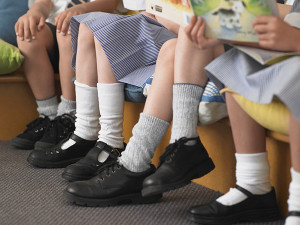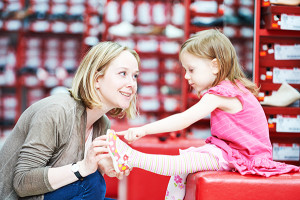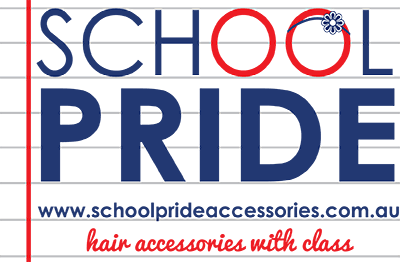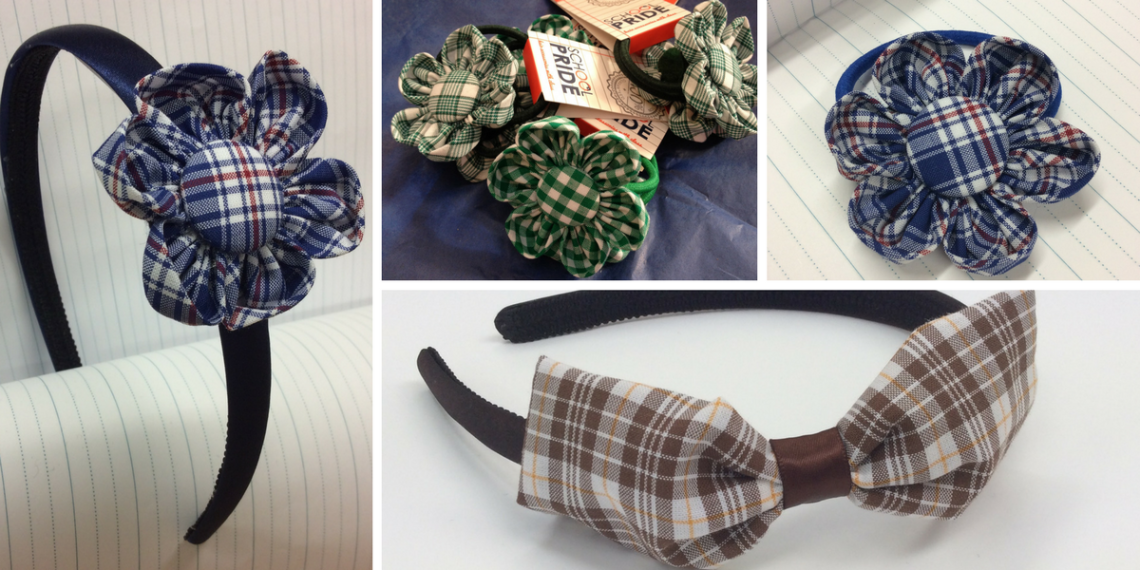How to Choose School Shoes That Won’t Hurt Their Feet
As we come to the last few weeks of the summer holidays, the rush to get our little ones ready for school has officially begun.
Oh the mayhem!
I don’t know about you, but for many mums like me, shoe shopping with kids is not much fun, even under normal circumstances. But shopping for school shoes is a whole other ball game, so don’t say you were not warned!

The kids are over-excited. You have a list of requirements and restrictions about what colour their shoes must be, what material it can be, what type of branding can be visible on the shoes, what type of shoe it needs to be, and more. The shops are over-crowded and under-staffed. The weather is hot. And the list goes on…
And if you have been through this shopping-for-school-shoes process before, you will know that it can be so difficult to know what to look for when choosing a pair of school shoes that our children will have to wear for up to 6-8 hours a day and for 5 days a week.
It is a long time to be wearing the same pair of shoes everyday!
When you decide to buy something cheap, they end up with a hole in its seam after 2 weeks. Or you buy an expensive brand but yet your child comes home after the second day of school with blisters on their feet.
The Podiatrist’s Recommendation
I wanted a professional’s opinion about how we can help our children choose school shoes that don’t hurt their feet, so I found a professional Podiatrist to answer some of my pressing questions and I would like to share them with you here.
So before we start, hands up if you don’t know what a podiatrist does?
Well, a Podiatrist is an allied health professional and they are trained to assess, diagnose, and treat conditions of the foot and lower limb. These include problems such as skin and nail problems, injuries to the ankle or foot, foot complications relating to other medical problems, as well as problems with gait or walking. Podiatrists work with all age groups – monitoring children’s growth and development, managing injuries, working with people with chronic disease, disability, as well as the elderly [1].
All that to say… there’s no other professional better qualified to ask about the health of our children’s feet!
Pam Chen is a Podiatrist based in Tasmania, and she works in Podiatry in both the public and private sectors, and is also a postgraduate research candidate. I asked her a few questions about our children’s feet and what we need to know when choosing school shoes, and she very generously shared her insight with us.
Can you tell us about your qualifications and your experience as a podiatrist?
I graduated from the University of Western Australia with a Bachelor’s degree in Podiatry and have worked in Tasmania since. I worked full-time for several years in a mixed Tertiary hospital/Community health position. Since 2014, I have worked part-time in this role whilst doing a research degree part-time (focusing on diabetic foot disease prevention) at the University of Tasmania. I also work privately at a GP practice for variety, which I love.
Choosing school shoes – any quick tips to help us shop smarter and choose the right shoes?
The most important thing is shoe fit – if you can, try and have your child professionally fitted when purchasing the shoes. If you can’t, take out the innersole and have your child stand on it barefoot. As a guide, there should be ½ inch between the longest toe and the end of the innersole. (More on sizing below)
In terms of design, flexibility is also important; the shoe should flex only at the ball of the foot (mimicking where the foot flexes), and not anywhere else. The shoe should also resist being wrung if you twist the opposite (length) ends away from each other; there should be a bit of movement, but only slight.
Children’s feet can get sweaty, so favour materials that allow the foot to breathe, e.g mesh, canvas, leather.
If your child is able to wear athletic/sport shoes as part of their uniform, ask what types activities they are likely to do during Phys Ed classes. “Cross-trainers” tend to have sturdier outsoles for side to side movement and differ from “Joggers/running shoes” which are designed for forward movements.
Avoid slip on shoes; there should be some kind of retaining mechanism (laces or Velcro) to hold the foot in place. Without this, the foot has to grip and work harder to be held in.
Shoes sizes – can we buy 1 or 2 sizes bigger to save money? School shoes can be very expensive!
I tend not to recommend this; most children wear through their shoes before growing out of them, especially if they are very active. The foot tends to grow in spurts, so check at the end of each school term that the shoe is still fitting correctly. If the shoe is too long, your child risks tripping and injuring him or herself.
Different brands also tend to have different interpretations of sizes, some run on the smaller whilst other run on the larger side. Make sure that yourself or a professional checks that the shoes fit well!
Lastly, width and arch heights are equally important as length. Some shoe brands offer width options – the innersole test is great, but when the shoe is on, you should be able to move the material just forward from the laces with ease; if the material is taut, that’s a sign that the shoe is too narrow, or arch height too low – go for a different design!
Brand of shoes – is there a brand that you recommend? And does more expensive mean better?
I tend to recommend Ascent shoes, available at The Athletes’ Foot, or Clarks. Even though they are more pricey, I’ve had positive feedback on comfort and durability from friends and colleagues alike.
Do your research about brands available to you locally. A well-designed, well-fitted pair of shoes is an investment into foot health and not a “splurge”.
Feet health – why is it important for us to get proper shoes for our kids? What are some common issues you see and what should all parents know?
Most parents are concerned about flat-footedness (which is normal to some extent; the foot is flat at birth and the arch takes approximately 7 years to develop). Occasionally I get concerns about in-toeing and out-toeing, but these too are part of developmental phases as your child grows. Bunions developing in teenage years could be another sign of bio-mechanical or functional issues with the foot. Growing pains (e.g Sever’s in the heel) is also quite common.
If you are concerned about any of the above, or if your child complains of pain, always get a professional opinion from your local Podiatrist. The Australian Podiatry Council has a series of resources which can be of help.
And that’s it!
You are now ready to conquer the ultimate challenge that is also known as “shopping for shoes for your school-aged child at the same time as the rest of the world.”
Good luck, and may the force be with you.

Resources:
[1] The Australian Podiatry Association (VIC) https://www.podiatryvic.com.au/what-is-podiatry/what-is-podiatry
Thank you for visiting us! To help parents with back-to-school expenses (and let’s be honest, to celebrate back-to-school time), here’s an exclusive bonus for you!
Get 50% off any My School fabric items when you check out with the code backtoschool.
Get gorgeous hair accessories in your child’s school uniform colours, all handmade right here in Melbourne.
The fine print:
- only valid for My School fabric items
- this code cannot be used with any other offers
- only ONE coupon per person
- code expires 12th February 2017
Click here to start shopping now and take full advantage of your 50% off discount!

